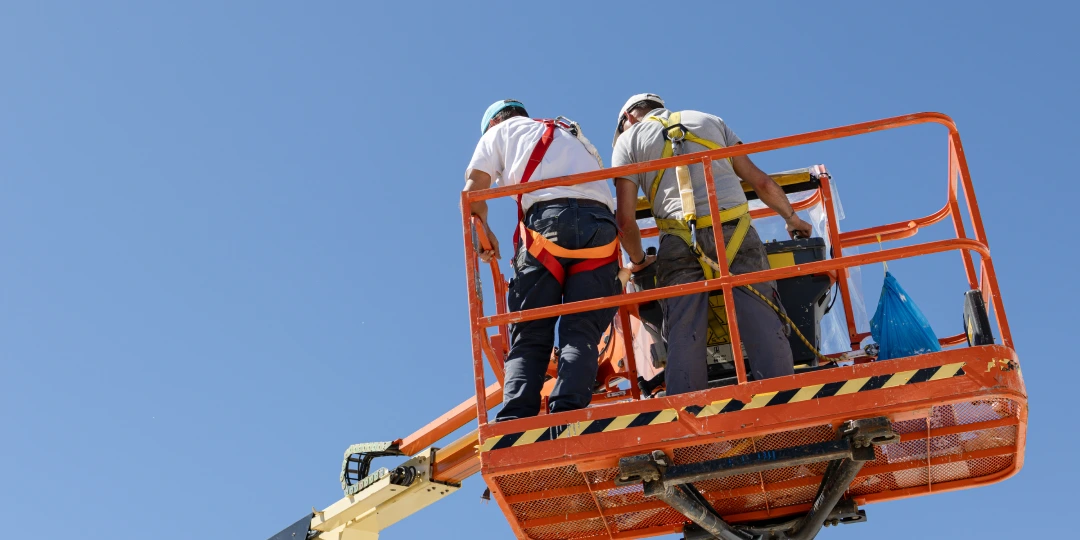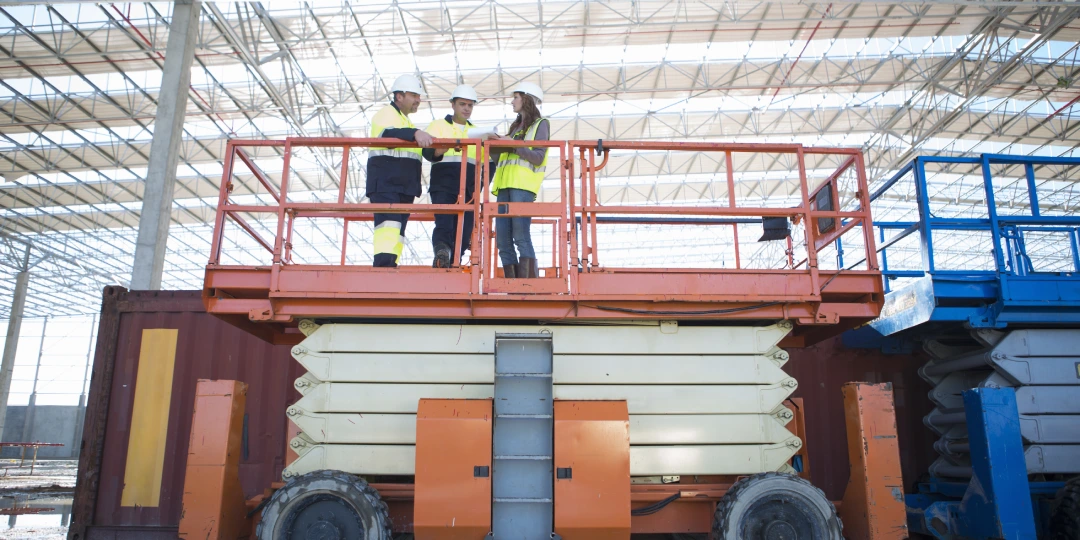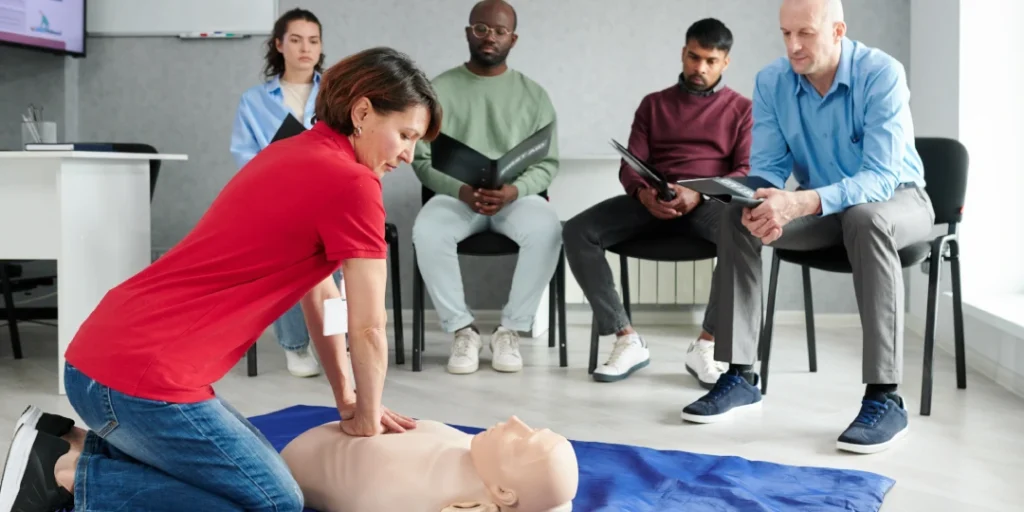Introduction: The Rising Demand for Aerial Lift Safety
The modern workplace—especially in sectors such as construction, telecommunications, warehousing, and maintenance—relies heavily on aerial lift equipment. From boom lifts to scissor lifts, these machines enable teams to work at heights that would otherwise be inaccessible or unsafe using conventional ladders or scaffolding. Their use dramatically increases productivity by allowing for quicker access and enhanced mobility in elevated areas. However, as the demand for efficiency grows, so too does the importance of ensuring these tools are used with precision and care.
In Nashville, a city experiencing rapid industrial and infrastructural development, the use of aerial lifts is on the rise. New construction projects, expanded utility networks, and vertical commercial growth are driving an increase in elevated work activity. This uptick, while economically promising, comes with an escalated risk profile. The more frequent and complex the lift operations become, the greater the potential for error if safety protocols are not strictly adhered to.
This context makes aerial lift safety training not only a best practice—but a necessity. It is no longer sufficient for operators to rely on intuition or on-the-job trial-and-error. Employers must ensure their teams are equipped with comprehensive, standardized training that prepares them to handle both routine operations and emergency scenarios. This is where Fortier Loss Control steps in, addressing a growing safety gap with high-quality, OSHA-compliant instruction tailored to the realities of Nashville’s evolving work environments.
The need for aerial lift safety is not just about reducing incidents—it’s about proactively fostering a workplace culture grounded in competence and caution. Proper training empowers workers to recognize hazards before they escalate, communicate clearly on-site, and respond effectively under pressure. In industries where elevated work is routine, such preparedness directly translates into fewer injuries, lower insurance costs, and stronger operational continuity.
Understanding the Risks of Aerial Lift Operations
Despite their undeniable utility, aerial lifts present a range of serious hazards when improperly operated. Common risks include tip-overs, falls from height, entanglement with overhead structures, and contact with electrical wires. Each of these can result in devastating injuries or fatalities. Most accidents stem from preventable causes—such as exceeding weight limits, failing to secure fall protection, or operating on uneven terrain. These are not flukes of machinery, but failures of planning, training, and situational awareness.
One of the most alarming aspects of aerial lift incidents is how swiftly they escalate. A momentary lapse in attention or a misjudged maneuver can lead to catastrophic outcomes. For example, raising a boom lift without inspecting the ground surface for stability could result in the entire unit tipping over. Similarly, failing to maintain the required clearance from power lines has repeatedly led to fatal electrocutions. Such scenarios underscore the importance of both procedural discipline and real-time hazard recognition.
Operator error remains the leading contributor to aerial lift accidents. This includes both novice mistakes and overconfidence from experienced workers. Mechanical malfunction, while less frequent, can also occur—especially when lifts are not routinely inspected or maintained. Safety training must therefore cover not only operational technique but also mechanical checks and emergency response protocols. Fortier Loss Control’s training addresses these vulnerabilities by offering practical, hands-on modules grounded in real-world conditions.
Effective aerial lift training goes beyond simply avoiding fines and citations. It cultivates a deep-rooted sense of responsibility across the workforce. Workers become more attuned to safety signals, better prepared to intervene when something seems amiss, and more likely to report unsafe practices. Ultimately, the risks associated with aerial lift operations can be dramatically reduced—but only through rigorous education, consistent practice, and a workplace culture that refuses to compromise on safety.
OSHA Standards: The Non-Negotiable Foundation
The Occupational Safety and Health Administration (OSHA) plays a critical role in establishing national workplace safety benchmarks, particularly when it comes to operating aerial lifts. Under regulation CFR 1926.453 and ANSI A92 standards, OSHA outlines a rigorous framework designed to safeguard both workers and the public. These guidelines serve as the backbone of responsible lift operation and encompass everything from operator training requirements to detailed inspection protocols. Ignoring them not only endangers lives—it invites steep financial and legal consequences.
Central to these standards are mandates on fall protection, load management, and pre-operational inspections. Operators must understand how to assess maximum load capacities, properly secure harnesses, and evaluate terrain suitability. Missteps in these areas often result in severe accidents that could have been easily prevented through adequate training. At Fortier Loss Control, these regulations aren’t just referenced—they’re embedded into every aspect of the training curriculum, ensuring compliance is second nature to every participant.
Another critical element of OSHA’s framework is the expectation of equipment maintenance and routine checks. A lift may appear functional but harbor mechanical vulnerabilities that only a trained eye can catch. Workers trained under Fortier’s OSHA-aligned programs learn not just to operate equipment but to critically assess its readiness, fostering a proactive rather than reactive safety culture. This preventative approach minimizes downtime and protects both personnel and property.
From a business standpoint, non-compliance with OSHA can be costly. Citations, project shutdowns, and liability lawsuits are just a few of the potential consequences. Employers who invest in compliant training through Fortier Loss Control not only mitigate these risks but also demonstrate due diligence—a vital asset during audits and insurance evaluations. In short, adherence to OSHA isn’t optional; it’s an operational imperative that Fortier ensures is fully met.

Why Nashville Worksites Require Specialized Training
Nashville’s growth trajectory is nothing short of extraordinary. With cranes dotting the skyline and development projects springing up across the city, the use of aerial lifts has become routine in a wide range of industries—from telecommunications to commercial construction. However, this urban boom brings with it unique challenges that demand localized, specialized training. It’s not enough to offer generic instruction; training must account for the nuanced demands of Nashville’s evolving worksites.
Mixed-use zones, pedestrian-heavy areas, and congested work environments complicate aerial lift operations. Precision is paramount. Operators must be acutely aware of their surroundings, able to maneuver safely in tight spaces, and prepared to address unexpected obstacles such as erratic foot traffic or unpredictable delivery routes. Standardized training often falls short in this context. Fortier Loss Control recognizes these environmental variables and tailors its programs to reflect the on-the-ground realities of the Nashville area.
Topography and weather also play a significant role. Nashville’s rolling terrain and frequent weather shifts—from sudden downpours to intense summer heat—introduce instability and increased risk when operating elevated equipment. Sloped ground, muddy job sites, and wind exposure require not only advanced equipment knowledge but adaptive thinking and situational awareness. Fortier’s training incorporates these regional considerations, equipping workers with the tools to safely operate under local conditions.
Employers in Nashville need a partner who understands these complexities and responds with precision. Fortier Loss Control offers that advantage. Their instructors possess not only technical expertise but also contextual awareness, having worked closely with contractors and firms across Middle Tennessee. The result is training that’s not just OSHA-compliant but operationally relevant—positioning businesses for safer, more efficient project execution in one of the South’s fastest-growing cities.
Fortier Loss Control: A Local Leader in Safety Education
Fortier Loss Control has earned its position as a trusted authority in Nashville’s occupational safety landscape by combining national standards with deep regional expertise. Unlike generic training providers, Fortier roots its programs in a clear understanding of Tennessee’s industrial sectors, regulatory climate, and workforce needs. This localized focus ensures that their aerial lift training programs are not only compliant but also exceptionally relevant to the specific conditions under which Nashville professionals operate.
With decades of combined experience across safety consulting, field operations, and compliance oversight, Fortier’s team brings a level of proficiency that’s both technical and practical. Trainers don’t merely recite regulations—they translate them into actionable strategies that workers can apply immediately in the field. This commitment to applied learning helps build true operator competence, reducing reliance on guesswork and significantly improving job site safety.
Client relationships are central to Fortier’s success. Whether working with a large-scale construction firm, a telecom provider, or a small maintenance crew, the company adapts its offerings to match the client’s pace, schedule, and specific risk profile. This flexibility is critical in fast-moving industries where downtime is costly and workforce dynamics shift rapidly. Fortier’s responsive model means safety training never becomes a bottleneck—it becomes a competitive advantage.
Reputation is earned, not assumed. Fortier Loss Control has built trust through consistency, delivering measurable results time after time. Their approach blends rigorous instruction with real-world insight, ensuring that graduates of their aerial lift training programs are prepared not only to meet regulatory requirements but to lead by example on job sites throughout Nashville. In a market where safety and reliability are paramount, Fortier Loss Control stands as a benchmark for excellence.
Comprehensive Aerial Lift Training Programs Explained
Fortier Loss Control’s aerial lift safety training is designed to provide a thorough, end-to-end education in the principles and practices of safe lift operation. The curriculum is meticulously structured to align with OSHA guidelines, incorporating ANSI A92 standards, while being approachable for operators at every level of experience. From first-time users to seasoned professionals in need of certification renewal, the program equips each participant with the critical knowledge required to perform safely and confidently at height.
The training begins with foundational theory, where participants learn to identify potential hazards associated with aerial lift use. These include unstable surfaces, overhead obstructions, weather-related risks, and proximity to power lines. By understanding these dangers early in the training process, operators develop the mindset of hazard anticipation—an essential skill for avoiding incidents before they occur. This preventative thinking is embedded throughout each training module.
In-depth attention is given to equipment inspection protocols and maintenance procedures. Operators are trained to conduct systematic pre-use inspections, covering hydraulic systems, tires, controls, guardrails, and emergency shutoff mechanisms. This diligence ensures that any mechanical faults are identified and addressed before lift operation begins. Proper harnessing techniques and fall protection strategies are also emphasized, ensuring full compliance with OSHA’s fall safety regulations and minimizing risk of injury in the event of an incident.
Emergency response training forms another core pillar of Fortier’s program. Participants learn how to handle lift malfunction, execute emergency descents, and respond to entrapment scenarios. These high-pressure situations require fast thinking and composure—skills that are cultivated through both simulated drills and structured debriefs. By the end of the course, participants leave not only with technical capability, but with a heightened sense of situational awareness and responsibility.

Hands-On Learning: Bridging Theory and Field Practice
Understanding aerial lift theory is essential, but applying that knowledge in a real-world context is where true competence is built. Fortier Loss Control recognizes this, which is why their training places a strong emphasis on hands-on experience. Participants work directly with various types of aerial lifts—scissor lifts, boom lifts, and articulating lifts—under the close supervision of experienced instructors. This immersive training approach bridges the critical gap between textbook understanding and jobsite application.
Each hands-on session is designed to replicate conditions operators will face on the field. Participants learn to navigate confined spaces, adjust to uneven terrain, and respond to rapidly changing site conditions. These realistic simulations reinforce muscle memory, sharpen motor skills, and improve confidence in operating under pressure. By practicing in a controlled environment, trainees can make mistakes safely—and learn from them—before ever setting foot on a live job site.
Instructors use real-time feedback to guide performance, correcting improper technique and reinforcing best practices as they arise. This immediate coaching model accelerates skill development and embeds good habits early in an operator’s career. Operators also gain practical insight into spatial awareness, platform stability, and coordinated communication—critical components of lift operation often overlooked in purely classroom-based instruction.
Moreover, this hands-on methodology supports multiple learning styles. While some individuals thrive in theoretical settings, others gain confidence only through direct experience. Fortier’s training accommodates both, ensuring that every participant walks away not only with knowledge, but with the tangible ability to act on it. This dual emphasis on learning and doing is what sets Fortier’s aerial lift training apart as a truly field-ready educational solution.
Customizable Solutions for Diverse Industry Needs
The industries that rely on aerial lifts are as varied as the equipment itself—each with unique operational demands and safety challenges. Fortier Loss Control understands that a one-size-fits-all approach to safety training falls short in today’s dynamic work environments. That’s why their aerial lift programs are designed for maximum adaptability, offering tailored content that aligns with the distinct needs of different sectors including construction, logistics, telecommunications, warehousing, and facilities maintenance.
For construction crews operating in tight urban zones or on uneven terrain, training emphasizes ground stabilization, weather considerations, and interaction with other heavy equipment. Utility contractors receive additional modules on proximity to power lines, insulated lift use, and long-reach operations. Warehouse personnel learn about indoor maneuverability, height limitations, and working around inventory systems. Each variation is developed with direct input from subject matter experts familiar with the specific challenges of the industry in question.
Beyond content customization, Fortier offers flexible delivery models that fit the operational rhythms of each client. Training can be hosted on-site to minimize disruption and provide immediate context to employees, or at Fortier’s dedicated facility for a focused learning environment. Options are available for both weekday and weekend sessions, accommodating variable shift schedules and project timelines. This adaptability allows businesses to prioritize safety without sacrificing productivity.
Customization also enhances knowledge retention. When trainees see how each lesson applies directly to their daily responsibilities, they are more likely to engage with the material and incorporate it into their routines. Fortier’s tailored approach ensures relevance, fosters higher participation rates, and ultimately yields safer job sites. In a world of generic training solutions, Fortier delivers specificity—transforming aerial lift education from a checkbox exercise into a strategic investment.
Investing in Workforce Confidence and Competence
Confidence is a crucial yet often underestimated component of jobsite safety. When operators feel properly trained, their posture changes, their movements become more deliberate, and their decision-making sharpens. Fortier Loss Control’s aerial lift training programs are designed not only to build technical proficiency but to cultivate the kind of confidence that drives excellence. This confidence enables workers to act decisively and safely, even in high-stakes or unpredictable scenarios.
Technical skill is the foundation, but Fortier goes further by integrating situational awareness into every lesson. Operators learn how to assess the broader context around them—evaluating environmental hazards, identifying co-worker proximity, and anticipating changes in terrain or weather. This layered training approach enables workers to respond to more than just mechanical inputs. It empowers them to think proactively, manage risk autonomously, and maintain control in the face of dynamic jobsite conditions.
Confident workers contribute to overall operational efficiency. They require less supervision, complete tasks more quickly, and are better equipped to handle equipment independently. This competence reduces error rates, minimizes downtime, and leads to a more synchronized and productive crew. Miscommunications and operational mishaps decline when everyone on the team shares a common language of safety and a baseline of technical know-how.
Perhaps most importantly, investment in employee training fosters loyalty and morale. When companies commit resources to their workforce’s development, workers feel valued. They are more likely to take ownership of their roles and operate with a sense of pride and accountability. Fortier’s programs help businesses not just train workers—but build leaders at every level of the operation. This ripple effect enhances safety, strengthens culture, and drives sustainable success.

Frequently Asked Questions

Conclusion: Raising the Bar for Aerial Lift Safety
Nashville’s industrial and commercial growth brings with it increased responsibility—and heightened risk. As more worksites depend on aerial lifts for daily operations, the need for expert-led safety training becomes paramount. Fortier Loss Control meets this need with a comprehensive, customizable, and locally informed approach that prepares workers for the complexities of elevated work environments.
Their programs do more than check regulatory boxes. They instill a culture of awareness, equip workers with practical tools, and enhance organizational resilience. By combining classroom learning with immersive, hands-on experiences, Fortier ensures that every graduate is not just certified—but capable, confident, and safety-conscious. This holistic model of education is what truly raises the bar.
Employers who choose Fortier are not only investing in compliance—they are investing in a future where operational excellence and workforce safety go hand in hand. The ripple effect of this commitment is profound: fewer injuries, lower liability, increased morale, and a stronger reputation in the marketplace. In an environment where safety can never be compromised, these outcomes are not just desirable—they are essential.
As Nashville continues to evolve, the standards for workplace safety must evolve with it. Fortier Loss Control remains at the forefront of this evolution, setting a high standard for aerial lift safety training in Tennessee. With every course delivered, every worker empowered, and every incident prevented, Fortier reaffirms its role as a champion of smarter, safer worksites throughout the region.



